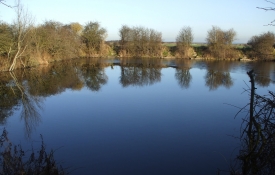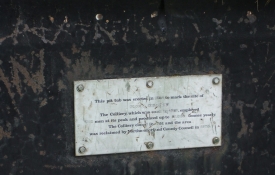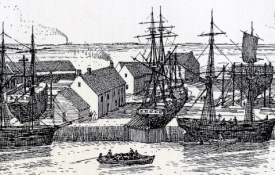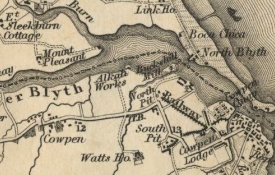Welcome to the Community View section of the website. This area is dedicated to articles of interest, community information and local topics that are submitted by members of the public or guest writers. It is also the main section dedicated to the Youth Media Group Project.
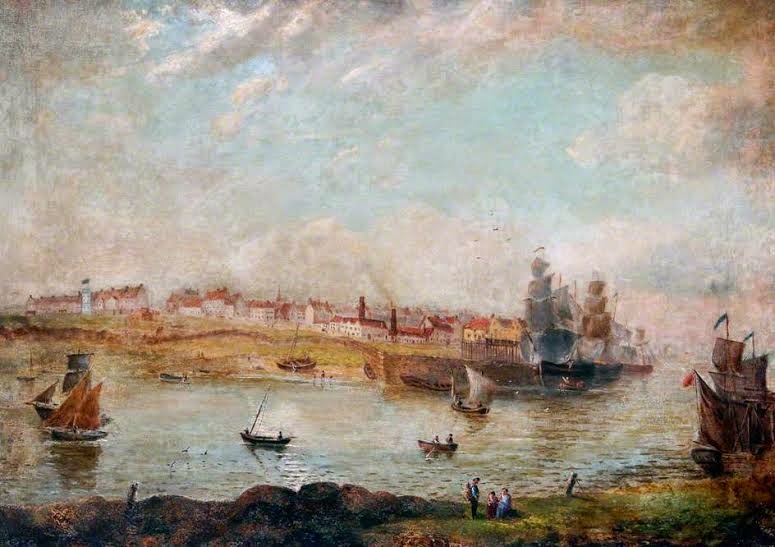
Two hundred years ago in Blyth there were celebrations lasting several days, involving much music, dancing, drinking and parading through the streets led by a detachment of the Northumberland Militia. John Wallace in his 1862 History of Blyth described the events of 1814 following the Napoleonic Wars:
Great rejoicings took place at the return of peace of which the effigies of James Nicholson and John Robinson were paraded through the town, and then burnt opposite the Star and Garter. These persons were called Jacobins, which was understood to mean a leaning towards the principles of the French revolution; or being reformers in politics, and somewhat sceptical in religion: everything French being at that time viewed with intense aversion. But the fact was that these men were the two best informed men of their class in the town, and their political opinions would have now been esteemed as that of moderate reformers. But in a very few years they were amply avenged for the indignities now heaped upon them on account of their opinions. In the years that followed, it was found that Plenty had not come with Peace. The general and long continued stagnation of trade which followed the peace bore hard upon the working classes, and prepared them to listen with readiness to the highly seasoned political teachings of the Black Dwarf and Cobbett's Register; so that the Radical Reform movement gathered around it the whole of the younger portions of the community, and those who had been the most active in burning their neighbours in effigy for their alleged Jacobinism in 1814 were themselves the most ardent Radicals in 1818.
| "Battle of Waterloo 1815" by William Sadler II - http://www.napoleon.org.pl/forum/download/file.php?id=2049&mode=view. Licensed under Public Domain via Wikimedia Commons - http://commons.wikimedia.org/wiki/File:Battle_of_Waterloo_1815.PNG#mediaviewer/File:Battle_of_Waterloo_1815.PNG |
The celebrations of 1814 were premature however. Napoleon escaped from exile and conflict resumed. However, the next year The Battle of Waterloo on the 18th June 1815 proved decisive in finally ending the war and a district of Blyth, developed soon after this time, was named Waterloo in commemoration.
I wanted to find out why the French war was of so much importance to a small town on the North East coast of England?
The Napoleonic Wars (1803–1815) were a series of wars between Napoleon's French Empire and a series of opposing coalitions. It was a continuation of the wars sparked by the French Revolution of 1789. The revolution was viewed with alarm by France's neighbours for fear the revolutionary ideas spread into their own country.
| Features and limit of building development in Blyth c1813 |
A colliery had been sunk at Cowpen in 1794 and this partly explains the increased growth of the town. Shipbuilding had begun at Blyth in 1750. The harbour and river channel were still as nature had formed them. It was not until the 1850s that serious improvements were made to the mouth of the river making the harbour we know today with piers, quays and a depth of water which allows the largest of shipping to enter the river. The south beach extended all the way to the present-day quayside and at low tide the river was actually fordable at this point. The arrival of steam ships and copper bottom vessels in the 19th century made the dredging of the river a necessity, but in the 18th century the ships were wind powered.
 |
| 1820s Blyth at the river mouth by Balmer |
In 1761 only three ships were registered to the port of Blyth, but by 1789 twenty-three vessels belonged to Blyth owners, rising to ninety-five by 1827. The number was growing rapidly. Six boatbuilders were listed in 1805. Cowpen Quay had been constructed in 1795 and the first dry shipbuilding dock was built in 1811. The merchant ships of Blyth largely traded with other east-coast ports, Lynn being a common destination.
 |
| Blyth in 1813 (The plessey wagonway is now the course of Plessey Road) |
| Salisbury and Winchester Journal - Monday 24 July 1815 |
One Sunday morning in [1811] the town was again thrown into a state of great excitement. Five Frenchmen, officers who had escaped from Edinburgh Castle , were captured by some countrymen returning home along the Plessey Wagonway (route between Blyth and Plessey some six miles away) at night. The Frenchmen were handed over to the soldiers stationed in the town.
Their captors were rewarded with £5.00 each. But the escape attempt caught the imagination of the townsfolk. Crowds came to the guard house with presents of food for the prisoners while the captors were abused for spoiling the Frenchmen's bid for freedom.
 |
| Duke of York |
The war also brought about the greatest spectacle Blyth would ever witness. It was an event that to the many that saw it would remain the most exciting day of their lives. The date was August 28th 1795. Seven thousand soldiers, from thirteen regiments of infantry and cavalry, in their finest and most colourful uniforms were lined up along the three-mile stretch of the links between Blyth and Seaton Sluice. At precisely seven o' clock the Duke of York, Duke of Gloucester and other top brass rode on the sands along the entire line inspecting the troops. With the inspection over the army staged a grand display of manoeuvres, drilling and firing which lasted for four hours. Wallace states that 30,000 people witnessed the event. Soldiers were camped out in scattered fields near Blyth (although he was probably using Eneas McKenzie's 1827 Historical Account as his source). The site where the Duke of Gloucester's regiment camped is now marked by Gloucester Lodge Farm. The regiment became known as the Grenadier Guards following the Battle of Waterloo.
.jpg) |
| Duke of Gloucester |
Massed regiments of transiting soldiers camping out around Blyth were to become a familiar sight during the war period and provided a lucrative trade to local shopkeepers.
However, times would remain tough for the residents of Blyth for a while after the end of the war. The number of sailors in the Royal Navy was quickly reduced at the end of the conflict. Merchant shipping also felt a financial downturn which led shipowners to man their vessels at dangerously low levels. Many seamen were thrown out of work. The ones still in employment entered a bitter and often violent strike in 1815.
The obituary of my great great great-grandmother, Margaret Maddison, mentions her brother John who had been a prisoner of the French during the Napoleonic wars. Margaret had been born in Longhorsely in Northumberland in 1785 and it was on Saturday October 7th 1876 that the Blyth Weekly News made the following reference to her brother.
.... Her first visit to Blyth appears to have been at a very early part of the present century, when she came to the town for the purpose of seeking news of her brother John, an English seaman, who was shut up in a French prison during the war, which was then raging between France and England.
John survived the war and moved to Alnmouth where he was reported to be a Master mariner and owner of the Schooner Mary's & Ann. There is much more research to be done by those nearer to NE resources.
People always think of history in terms of the last 100 years but Blyth has been around a lot longer and its interesting to see a post on something as far back as napoleon.
Peter
